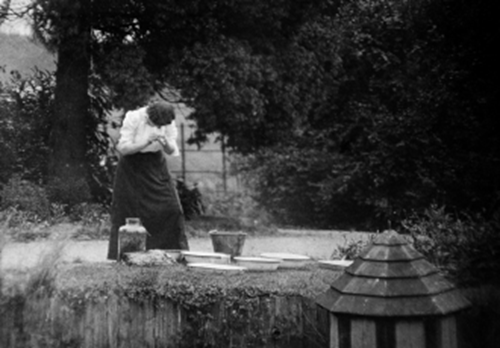Dr. Muriel Robertson FRS (1883-1973) for the new £50 design

The National Collection of Type Cultures would like to nominate Dr. Muriel Robertson (1883-1973), a prolific parasitologist, bacteriologist and immunologist, to feature on the Bank of England’s new £50 note design. Dr. Robertson is now most well-known for her work on elucidating the complex life cycles of trypanosomes; pathogenic unicellular eukaryotes that can cause disease in animal and human hosts.
In 1911 Dr. Robertson was appointed Protozoologist to the Protectorate of Uganda by the Royal Society; somewhat fearlessly considering a member of a previous Royal Society commission had contracted sleeping sickness and died. Her research into the parasite Typanosoma brucei gambiense emphasized the danger posed by trypanosomiasis to the region, and formed the basis of several investigative and preventative measures.
During both world wars, Dr. Robertson studied the anaerobic bacteriology of war wounds, developing complex media for their study, demonstrating the clinical utility of antitoxin, and produced landmark research on anaerobe pathogenesis. This work and data contributed to British efforts to develop toxoid vaccines, which became available for us towards the end of the Second World War. Several of her bacterial strains, isolated from material sent from Flanders during the First World War, were among the first to be deposited into the National Collection of Type Cultures when it was established in 1920.
Dr. Robertson was both a distinguished scientist and an extremely accomplished individual; she was the eighth woman to be elected to be a Fellow of the Royal Society in 1947. Her well-earned reputation as a formidable first class scientist was, in part, indebted to the great depth and detail of her work, extreme rigour in research, piercing intellect and tuition of the younger generation of scientists. That she was educated at a time when most of education received by women was to prepare them for marriage, worked at a time when the scientific establishment was far more hostile towards women and minorities than it is now, and didn’t enjoy the benefit of being able to use what we would now consider basic molecular biology makes here achievements even more outstanding.
Despite this she remains under-recognised in the public sphere. A character doubtless possessed of great courage, strength of character and integrity, we at NCTC consider her an inspiration and a role model for both the public and scientists worldwide, and wholly deserving of further recognition and commemoration.
References
The above biographical details are based very heavily on Dr. Tansy Hammarton’s paper; The Remarkable Dr Robertson.
- Hammarton TC. The remarkable Dr Robertson. Parasitology. 2017 Oct;144(12):1590-1601.
- Cowan ST. The national collection of type cultures. Lancet. 1950 Jan 14;1(6594):82.
- Robertson M. 1929. The organisms associated with gas gangrene. A System of Bacteriology. Vol. 3. 225-297. HMSO, London.
Written by Jake D. Turnbull
Follow Jake on Twitter @hotchpotchjake
